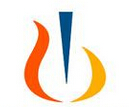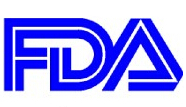重磅!诺华抗癌药Farydak获FDA批准,系治疗多发性骨髓瘤的HDAC抑制剂
2015-02-27 佚名 生物谷
瑞士制药巨头诺华(Novartis)近日收获重磅消息,经历大起大落的抗癌新药Farydak(panobinostat,LBH589)最终获得FDA青睐。FDA已批准Farydak联合Velcade(bortezomib,硼替佐米)和地塞米松(dexamethasone)用于既往接受至少2种治疗方案(包括Velcade和一种免疫调节(IMiD)药物)治疗失败的多发性骨髓瘤(myltiple my
瑞士制药巨头诺华(Novartis)近日收获重磅消息,经历大起大落的抗癌新药Farydak(panobinostat,LBH589)最终获得FDA青睐。FDA已批准Farydak联合Velcade(bortezomib,硼替佐米)和地塞米松(dexamethasone)用于既往接受至少2种治疗方案(包括Velcade和一种免疫调节(IMiD)药物)治疗失败的多发性骨髓瘤(myltiple myeloma,MM)患者群体。FDA批准Farydak时附带有一项风险评估及减灾策略(REMS),用于宣传和教育医疗卫生专业人员了解可能与Farydak治疗相关的风险。此次批准,也标志着Faryda成为用于治疗多发性骨髓瘤(MM)的首个组蛋白脱乙酰酶(HDAC)抑制剂,该药的表观遗传学活性,可能有助于恢复多发性骨髓瘤细胞的功能。目前,Farydak在全球其他地区的监管审查正在进行中。
Farydak(panobinostat)是一种新型、广谱组蛋白脱乙酰酶(HDAC)抑制剂,具有一种新的作用机制,通过阻断组蛋白脱乙酰酶(HDAC)发挥作用,该药能够对癌细胞施以严重的应激直至其死亡,而健康细胞则不受影响。
Farydak通过FDA的加速审批程序批准。该药的获批是基于一项全球III期临床研究(PANORAMA-1)中一项预定义亚组分析(n=193)的疗效和安全性数据。数据显示,在既往接受硼替佐米和一种免疫调节(IMiD)药物治疗的多发性骨髓瘤(MM)群体中,联合标准治疗方案(硼替佐米+地塞米松)治疗时,与安慰剂(PFS=5.8个月,n=99)相比,Farydak延长了中位无进展生存期(PFS=10.6个月,n=94)。此外,Farydak治疗组有59%的患者在治疗后肿瘤缩小或消失,而安慰剂组数据为41%。
不过,值得一提的是,Farydak的监管之路可谓波折。在2014年初,诺华提交panobinostat监管申请时,鉴于其良好的疗效,FDA表示将采用快速审批通道审核该药,使审查周期由通常的12个月缩短至8个月。然而,去年11月底,FDA肿瘤药物顾问委员会(ODAC)以5:2的投票结果建议拒绝批准panobinostat。该委员会表示,panobinostat针对经治多发性骨髓瘤(MM)患者群体确实有效,但该药的副作用过于严重,要求FDA慎重考虑。这一建议也迫使FDA将原定于12月份的最后期限推迟至今年3月。之后,诺华提交了额外的分析数据,同时修改panobinostat适应症,用于既往接受至少2种标准疗法(包括硼替佐米和免疫调节剂)的多发性骨髓瘤(MM)群体。FDA经过仔细审查后,最终批准panobinostat。需要指出的是,Farydak带有黑框警告,提示该药严重的腹泻和严重及致命的心脏事件、心律失常及心电图(ECG)变化。
多发性骨髓瘤(MM)是一种无法治愈且复发率很高的血液癌症。在过去的11年中,武田的抗癌药Velcade(硼替佐米)作为唯一一种已被证明能够延缓新诊和复发性多发性骨髓瘤(MM)总生存期(OS)的药物,在多发性骨髓瘤(MM)的临床治疗中发挥了重要作用。但该领域仍存在着远未满足的巨大医疗需求。
英文原文:
Novartis receives FDA approval of Farydak®, the first HDAC inhibitor for patients with multiple myeloma
-Farydak, an HDAC inhibitor with epigenetic activity, approved in combination for patients who received at least two prior regimens including bortezomib and IMiD[1]
-Farydak prolonged median PFS benefit when used with bortezomib and dexamethasone combination versus combination alone (from 6 to 11 months)[1]
-Multiple myeloma is an incurable blood cancer and there is an urgent need for new treatments[2]
-Farydak is approved under FDA's accelerated approval program; regulatory applications are underway in the EU, Japan and worldwide
Basel, February 23, 2015 - Novartis announced today that the US Food and Drug Administration (FDA) has approved Farydak® (panobinostat, previously known as LBH589) capsules in combination with bortezomib* and dexamethasone for the treatment of patients with multiple myeloma who have received at least two prior regimens, including bortezomib and an immunomodulatory (IMiD) agent[1].
"Farydak represents an exciting agent with a new mechanism of action that is part of a promising class of drugs in this setting," said study investigator Paul Richardson, MD, Clinical Program Leader and Director of Clinical Research, Jerome Lipper Multiple Myeloma Center at Dana-Farber Cancer Institute. "Importantly, Farydak has been shown to improve progression-free survival in relapsed multiple myeloma patients who have received at least two prior regimens, including bortezomib and an IMiD, which is an area of particular unmet medical need."
Farydak has been shown to extend the progression-free survival (PFS) benefit of the standard-of-care therapy in this patient population[1]. Farydak is approved under accelerated approval based on PFS[1]. Continued approval for this indication may be contingent upon verification and description of clinical benefit in confirmatory trials. The FDA's accelerated approval program gives patients access to treatments for serious or life-threatening illnesses that provide meaningful therapeutic benefit over existing treatments. The FDA has approved a risk evaluation and mitigation strategy (REMS) for Farydak. The REMS program serves to inform and educate healthcare professionals about the risks that may be associated with Farydak treatment.
This FDA approval is based on efficacy and safety data in a pre-specified subgroup analysis of 193 patients who had received prior treatment with both bortezomib and an IMiD during the Phase III, randomized, double-blind, placebo-controlled, multicenter global registration trial, called PANORAMA-1 (PANobinostat ORAl in Multiple MyelomA)[1]. The trial found that the median PFS benefit increased in Farydak patients who had received prior treatment with both bortezomib and an IMiD (10.6 months; n=94), as compared to the placebo arm (5.8 months; n=99) (hazard ratio=0.52 [95% confidence interval (CI): 0.36, 0.76])[1].
The most common adverse reactions (incidence >= 20%) in clinical studies are diarrhea, fatigue, nausea, peripheral edema, decreased appetite, pyrexia and vomiting[1]. The most common non-hematologic laboratory abnormalities (incidence >= 40%) are hypophosphatemia, hypokalemia, hyponatremia and increased creatinine[1]. The most common hematologic laboratory abnormalities (incidence >= 60%) are thrombocytopenia, lymphopenia, leukopenia, neutropenia and anemia[1]. Farydak can cause fatal and serious toxicities including severe diarrhea and cardiac toxicities. Severe diarrhea occurred in 25% of Farydak-treated patients. Severe and fatal cardiac ischemic events, including severe arrhythmias and ECG changes have occurred in patients receiving Farydak. Serious adverse events (SAEs) occurred in 60% of patients treated with Farydak, bortezomib and dexamethasone compared to 42% of patients in the control arm. The most frequent (>= 5%) treatment-emergent SAEs reported for patients treated with Farydak were pneumonia (18%), diarrhea (11%), thrombocytopenia (7%), fatigue (6%) and sepsis (6%). Additional serious adverse reactions included hemorrhage, myelosuppression, infections, hepatotoxicity and embryo-fetal toxicity[1].
"Novartis is committed to developing innovative first-in-class therapies for patients who need treatment options," said Bruno Strigini, President, Novartis Oncology. "Farydak represents a new drug class in multiple myeloma, providing these patients with an important treatment approach for this difficult-to-treat cancer."
Farydak is the first histone deacetylase (HDAC) inhibitor available to patients with multiple myeloma[3]. As an HDAC inhibitor, its epigenetic activity may help to restore cell function in multiple myeloma[4].
Additional regulatory submissions for Farydak are being reviewed by health authorities worldwide.
About multiple myeloma
Epigenetics is the cell programming that governs gene expression and cell development[3]. In multiple myeloma, the normal epigenetic process is disrupted (also called epigenetic dysregulation) resulting in the growth of cancerous plasma cells, potential resistance to current treatment, and ultimately disease progression[5],[6].
Multiple myeloma impacts approximately 1 to 5 in every 100,000 people globally[7]. Multiple myeloma is a cancer of the plasma cells, a kind of white blood cell present in bone marrow-the soft, blood-producing tissue that fills the center of most bones. The cancer is caused by the production and growth of abnormal cells within the plasma, which multiply and build up in the bone marrow, pushing out healthy cells and preventing them from functioning normally[8]. Multiple myeloma is an incurable disease with a high rate of relapse (when the cancer returns) and resistance (when the therapy stops working), despite currently available treatments[2]. It typically occurs in individuals 60 years of age or older, with few cases in individuals younger than 40[9].
本网站所有内容来源注明为“梅斯医学”或“MedSci原创”的文字、图片和音视频资料,版权均属于梅斯医学所有。非经授权,任何媒体、网站或个人不得转载,授权转载时须注明来源为“梅斯医学”。其它来源的文章系转载文章,或“梅斯号”自媒体发布的文章,仅系出于传递更多信息之目的,本站仅负责审核内容合规,其内容不代表本站立场,本站不负责内容的准确性和版权。如果存在侵权、或不希望被转载的媒体或个人可与我们联系,我们将立即进行删除处理。
在此留言














#HDAC#
61
#FDA批准#
89
#多发性#
115
很不错学习了
149
#抑制剂#
57
#HDAC抑制剂#
92
#诺华#
69
#抗癌药#
70
#重磅#
106
不错的文章,学习了
178